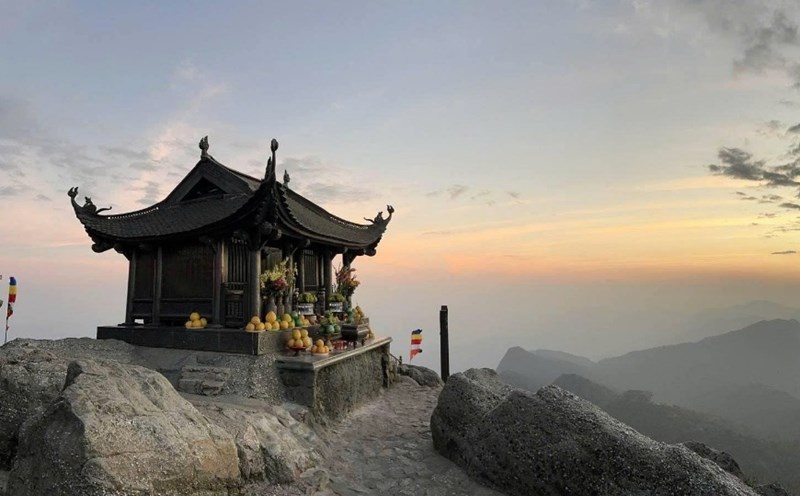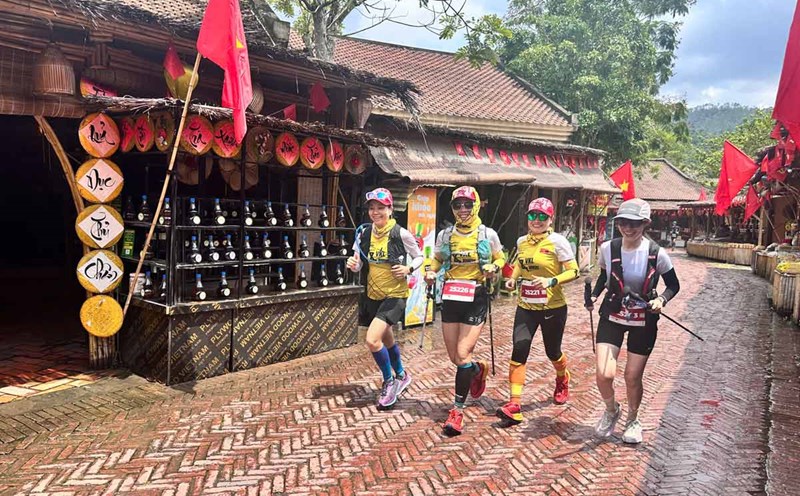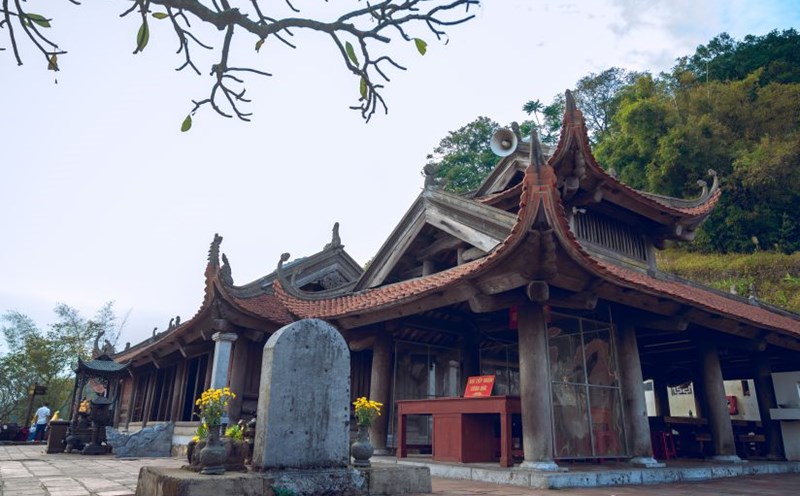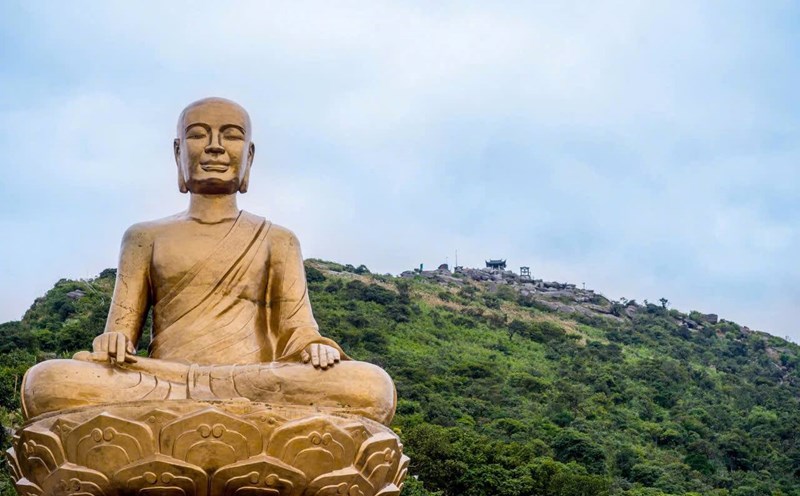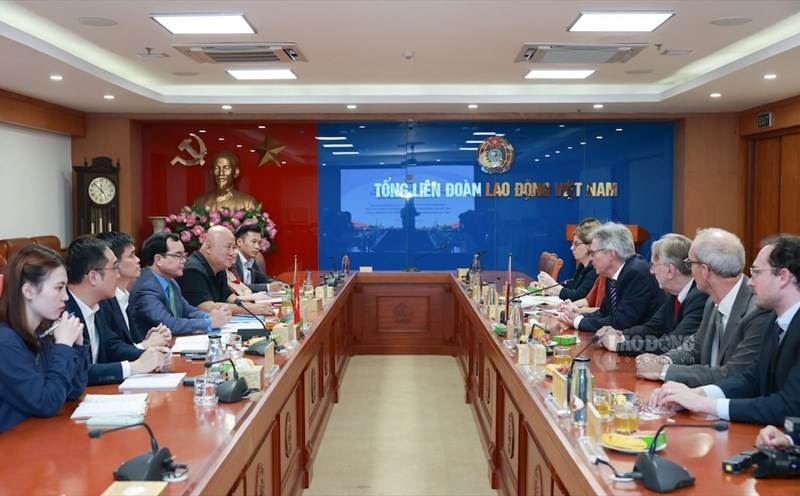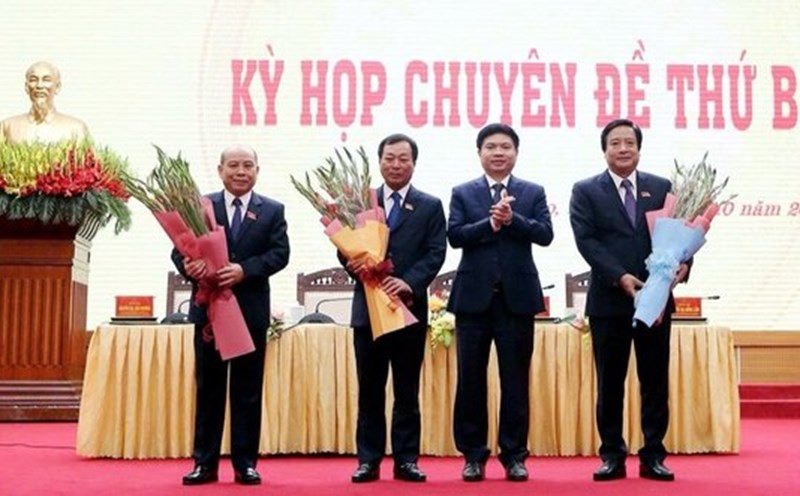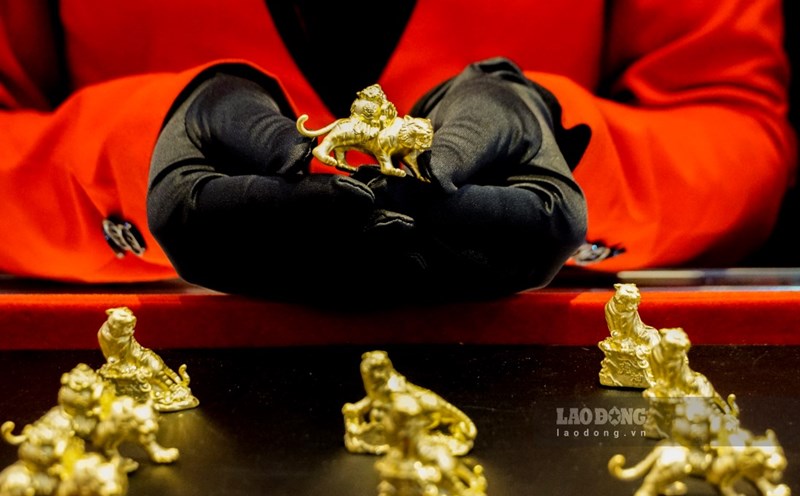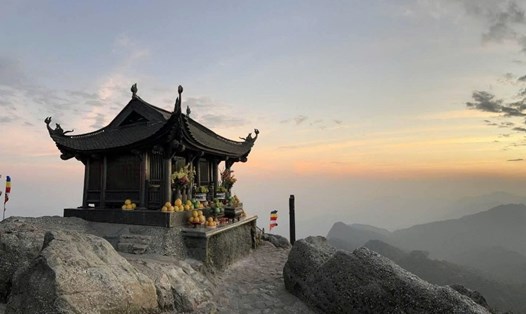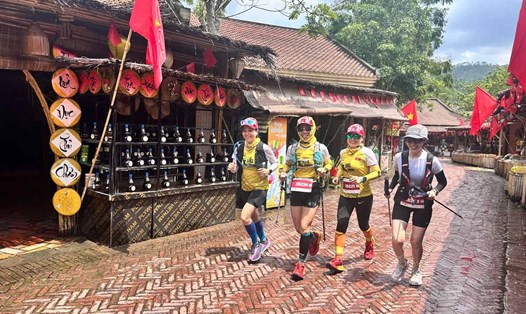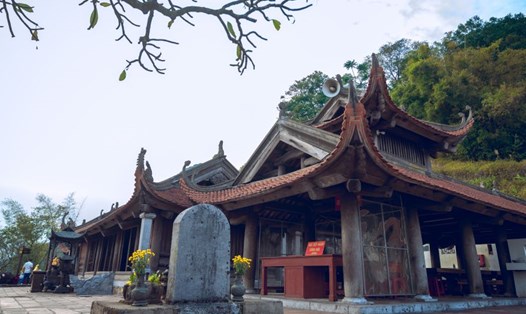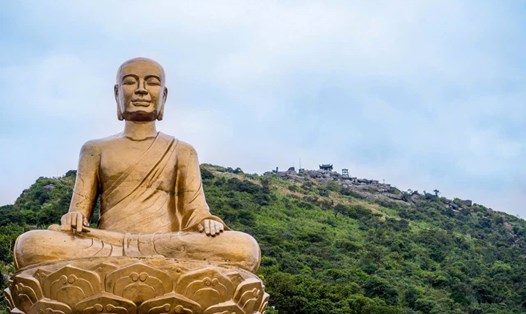Currently, the national treasure of the Buddha statue of King Tran Nhan Tong is still preserved and protected in Hue Quang Tower Garden on the sacred Yen Tu monastery, while the Ngoa Van Golden Box is currently kept at the Quang Ninh Museum, Ha Long Ward.
The statue of Buddha Hoang Tran Nhan Tong - Yen Tu, a unique artifact, was recognized as a national treasure in the 9th phase (2020). The statue is placed in the Ancestor's Tower (Hue Quang Tower) in Yen Tu relic site, Quang Ninh province.
According to the Management Board of Monuments and Scenes of Quang Ninh province, the statue of Buddha Hoang Tran Nhan Tong in Yen Tu is a stone statue dating back to the 17th century, one of two types of stone used to build the current Hue Quang tower and also the stone used to build the Hue Quang tower during the Tran Dynasty.
This is a unique ancient statue that does not overlap with any other statue in terms of pose, costumes, decorative motifs and form. This is also the oldest statue that still shows the form of King Tran Nhan Tong.
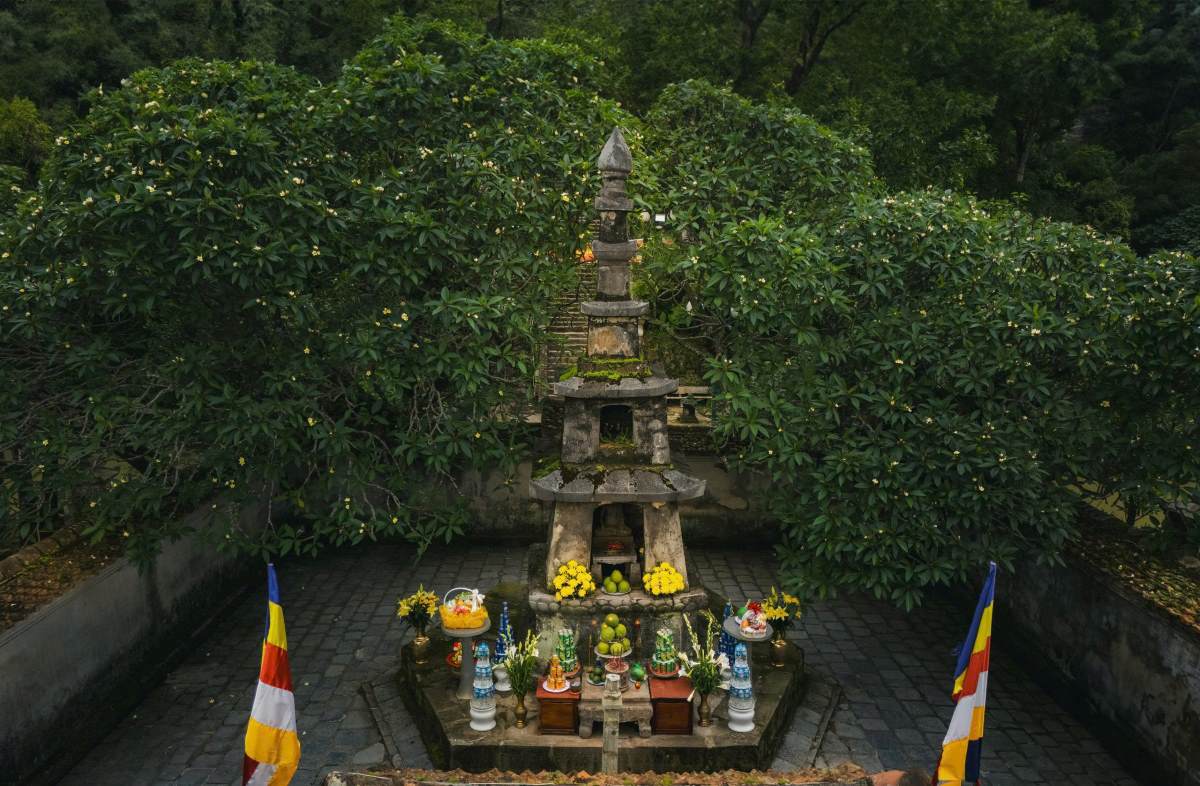
The statue is completely hand-carved, including two parts: the statue pedestal and body, the statue is 83.8cm high overall (of which the statue body is 59cm high, the statue pedestal is 8cm high; the knees and soles are 16.8cm high) the head is 13.5cm wide.
The statue's pure Command and meditation pose expresses the self-respect, highest, highest, and free-fall posture, but not less than the standard in the thoughts and hanhides of the Jiagu.
Meanwhile, the Ngoa Van - Yen Tu Golden Box, also a unique artifact, was recognized as a national treasure in the 7th phase (2018).
The artifact was discovered on June 21, 2012 in Trai Loc village, An Sinh commune, Dong Trieu, Quang Ninh province (now An Sinh ward, Quang Ninh province) during the construction of the expansion of the spiritual pilgrimage road from Trai Loc to the Ngoa Van pagoda relic - where King Tran Nhan Tonh converted the Buddha.
The artifact is 4.2cm high, weighs 56.44 grams (equivalent to about 15.04 taels of gold), and has the shape of a lotus flower. According to researchers, this could be a valuable item in the royal palace.
The box is spherical in shape, with 11 sacks, each sack is shaped like a round lotus wing. The shape of the box itself is a lotus growing in fullness. The box body has a base to create a sack simulating the shape of lotus petals, a smooth face, the body of the sack is attached to the base, the lotus petal body is decorated with clouds and lemon flowers (also known as the money flower); the mouth of the body has joints to cover the box.
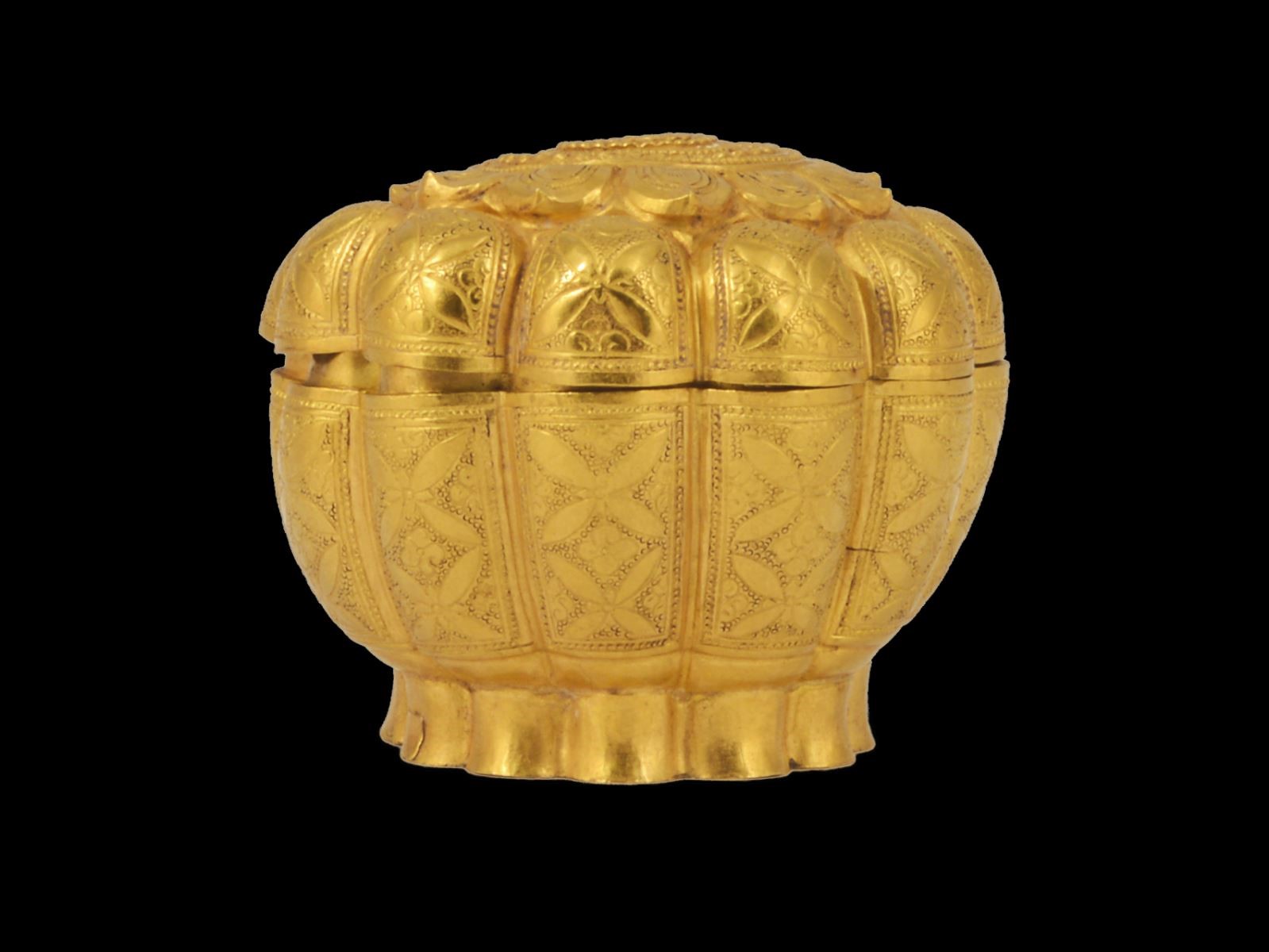
The half-shaped box cover, the attachment to the body is made up of 11 large main wings at the end, in the middle of the cover is a lotus platform. The lotus plant has 4 layers of wings arranged in a circle and is created with a very sophisticated pattern, rich in realities. Right in the center of the box lid is a lotus mirror that is crept down, increasing the shape of the surrounding lotus layers while at the same time looking at the overall box from top down like a full lotus with many layers of wings showing off their beauty and giving off the scent.
Based on the appraisal results of the Antiquities Appraisal Council (Ministry of Culture, Sports and Tourism), according to scientists, the Ngoa Van - Yen Tu Golden Box can be confirmed to date back to the Tran Dynasty, the first half of the 14th century.
The box is still intact, so far no individual or locality in Vietnam has discovered or preserved similar artifacts, so the Ngoa Van - Yen Tu Golden Box is a unique artifact.

